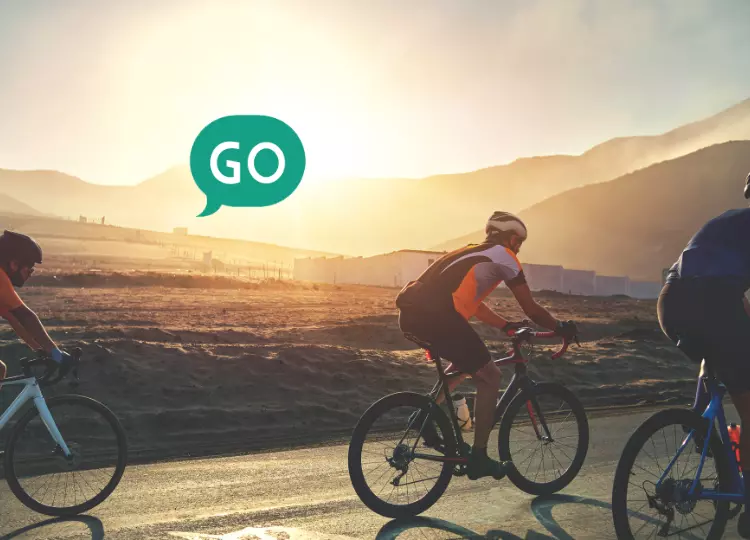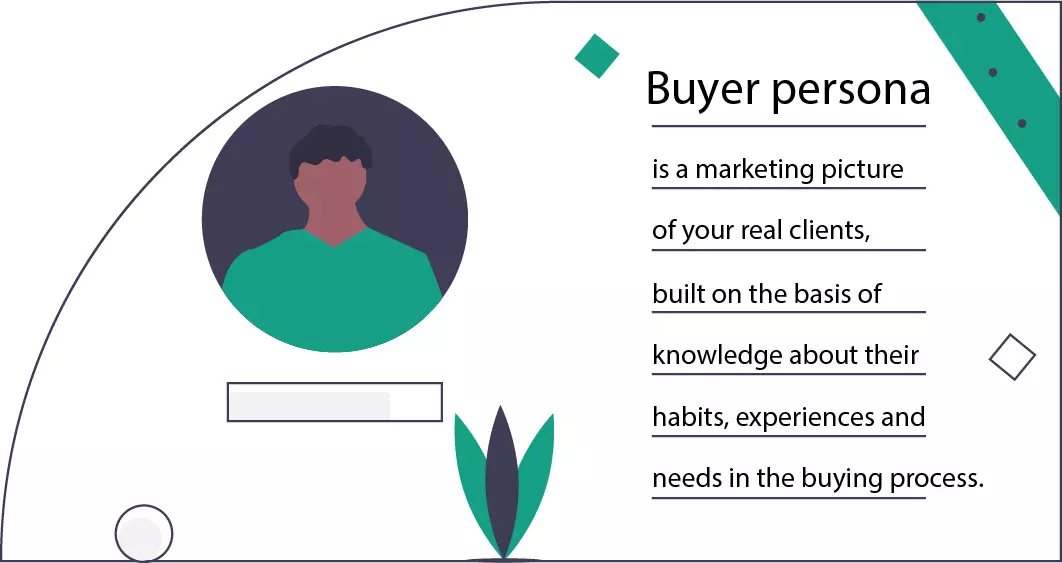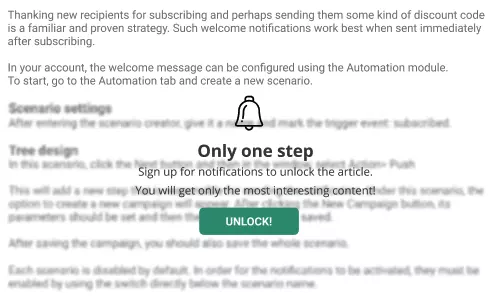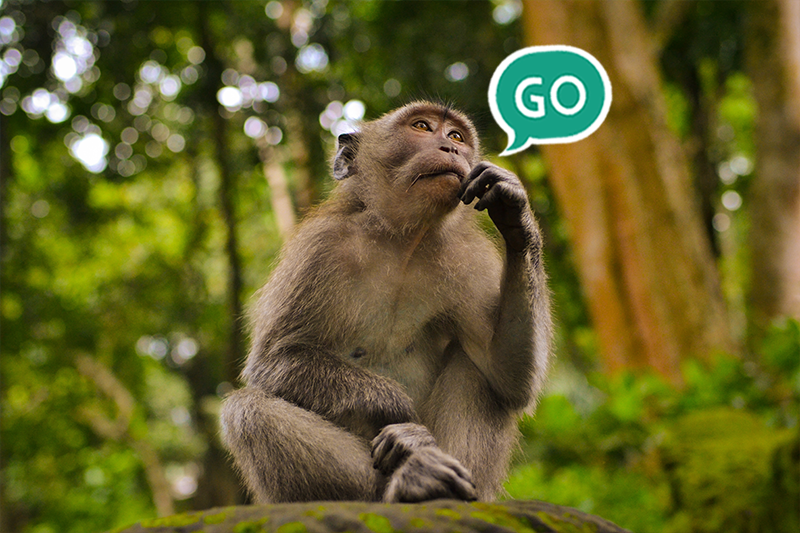11 tips for effective content distribution in content marketing
 Katarzyna Kwartnik
Katarzyna Kwartnik
91% of B2B marketers use content marketing. For B2C this number is 86%. At the same time, there are nearly 4 million blog posts published every day.
Content is king and we all know it. But how many of these posts will ever be read? And more importantly - how many of them will bring any marketing or PR effect?
1%? Maybe even less. Why?
Because most of them are worthless mirage content that is just a reproduction of hundreds of articles that exist somewhere else on the Internet.
The second reason is that they will never see the glorious first Google page - no matter how good they are.
There is also a third reason, connected with the previous one. It looks like this: You write a genius article. Then you post it on Facebook and... voila! No, it doesn’t work that way.
Luckily, there’s a solution for every problem - it’s called the effective content distribution strategy.
What is content distribution?
Content distribution is the process that starts with planning what to write and ends with publishing, sharing and promoting your content.
Sorry, just kidding - it never ends. After publishing and promoting, you analyze your content performance and distribute it even better.
Also, you shouldn’t perceive content distribution as something that happens after the content has been published. In the rest of the article, I will try to explain why.
Content distribution in content marketing
Content marketing without a content distribution strategy is a waste of effort, time and money. Writing genius text simply doesn’t make sense when there is no one there to consume it.
Let’s start with the basics.
1. Write what needs to be written - start with research
Distribution starts well before writing. For the successful promotion of a specific piece of content, you need to make sure that there is a point of creating it. Yes, it’s all about the topics.
4 things to research before bringing content to life
Keywords related to your product/service
Keywords will not only show you the path to better results in search engines but also get you acquainted with your target audience questions.
Competitor analysis
If you want to beat them, you should check what brings them the most traffic.
Trends and news
What’s not yet in Google, may be found in popular among your audience magazines or conferences.
Social listening
Or reading, to be precise. Try to discover your audience's problems and challenges by being where they are (mostly social media groups).
There is of course much more along the way, but these 4 steps are crucial to success. Let’s go further.
2. Set goals and KPIs
It is difficult to talk about content strategy without mentioning KPIs, which should be set for every single piece of content. What indicators can you measure regarding content distribution?
(Micro) Conversion rate. It doesn’t, of course, have to be conversion understood as a purchase. Micro conversions are all the small things that lead to a proper conversion. It can be a newsletter or web push sign-up, downloading an e-book/white paper or visiting a specific page.
Unique page views.
Users acquisition taking into account acquisition channels (organic, PPC, social media, etc.). Just to check if everything is happening according to the plan.
Engagement: bounce rate and average time spent on page. These indicators will help you determine whether you target the right audience and publish useful content.
Shares and comments. Probably the best award for a content marketer.
How can this help you with content distribution? By determining a goal for every text, you will know how to distribute it, and referring to KPIs can help you judge whether your strategy is working.
For example, imagine you’ve written an article about the latest changes in the Google search algorithm. You want people to read it now since it will be outdated at some point. Your goal is to create your image as an expert in the digital marketing field and get new subscribers. The best form of promotion in such cases is paid promotion in social media, sending newsletters or web push notifications.
And what about if you want to write an article about planting a flower? It’s slightly different, right?
3. Identify your readers
Creating buyer personas is essential to conduct any sales or marketing activities.

I assume that at the stage of planning content distribution you already know your audience's needs and problems. But what matters the most for reaching readers is where they look for information and if they look - maybe they prefer getting it.
Some of them will look for it in Google, some in social media groups, but many of them won’t do anything and your job is to let them know about your content’s existence.
This brings us to...
Content distribution channels
Effective content distribution channels rely on two things: the places you publish content and how you promote it. The most common approaches are based on three kinds of channels:
Owned channels:
blog posts
white papers, e-books, reports, infographics, videos, podcasts, etc.
landing pages
social media channels
newsletter
web push notifications
Earned channels:
shares
reviews
comments
Paid channels:
PPC (display ads, social media ads, retargeting)
sponsored articles
guest posts (if paid)
influencers (if paid)
4. Evaluate current content
Before you start writing anything new, take a closer look at the texts which have already been published on your website. Audit them in order to see if there is a place for improvement.
Are they good? Make them better.
Are they bad? Make them good.
Is there no hope for them? Delete. Really, there is no sense of keeping content that won’t bring any use for readers or create traffic.
Always review articles that have already been written and remember to update them - it’s much easier to increase the rank of a URL that has existed for a couple of months or years than the newly created one.
5. Create an editorial calendar
“Plan your work for today and every day, then work your plan”
Margaret Thatcher said this, probably without having a clue that something like content marketing would ever exist. But it suits well, doesn’t it?
You know that publishing new content is important and that’s why you have your content marketing machine running - probably running very fast. For you and your team to keep up with it you need a good plan, which in this case might be an editorial calendar.
An editorial calendar includes:
title (for example of an article)
publishing date
format (blog post, guest posts, e-book, etc.)
keywords
competitors to outrun
promotion tools (web push, newsletter, Facebook)
purpose (traffic, conversion)
repurposing plans (infographic, presentation, podcast)
An editorial calendar will also help you with analyzing the effectiveness of your content strategy. Knowing exactly when and how a piece of content was distributed, you will be able to better evaluate the results.
There’s no need for advanced tools to build your calendar, you can use Excel, Google Sheets or even Google Calendar.
6. Use more than text
Have you read every sentence of the article you are currently reading? Have you read even half of it?
No worries, I’m not offended. I would probably do the same. With the attention span limited to 8 seconds, we simply are not able to focus on long blocks of text.
Luckily, content marketing is much more than just articles and black letters on a white background. Try to enrich your content with eye-catching graphics, gifs, charts or videos.
Explore the world of content marketing and choose the form of content that is the best match for your audience and the topic. Maybe it’s not a blog post? :O
Instead of writing article after article, repurpose the best parts of them into e-books, infographics, podcasts or videos. It won’t get you much organic traffic, but will help you reach a new audience.
7. Build a subscriber base
Most digital marketing efforts come down to one thing - bringing visitors to a website. If they showed up on it (even once), your job is to turn them into subscribers.
Is email marketing the only way to do that? No.
Let me introduce web push notifications
Web push notifications are short messages that appear directly on your screen. They went live in 2015 but have already managed to change the way brands communicate with their subscribers. Why?

The most important qualities of web push notifications are:
you don’t need to collect email addresses or cookies to build a subscriber base and still, they are a form of permission marketing,
they are resistant to AdBlock, cheaper than paid ads and more effective than newsletters, with an average CTR of 15%,
notifications display no matter what site you’re currently on - directly on the screen, mobile or desktop,
you can set up marketing automation scenarios and send them based on subscriber behavior or interests.

Test web push - for free!
You can use web push notifications in the same way you use newsletters - except that they are more convenient and… visible for your subscribers.
How can you encourage page visitors to become web push subscribers?
1. Educate
The first newsletter was sent in 1978, while web push notifications started to evolve only in 2015. No surprise that a lot of people don’t know what web push is and associate it with spam.
Luckily, you have the ability to change their perspective. Don’t hesitate to answer their potential questions. Explain what web push is and why your website sends notifications. The best way to do this is to write a blog post.
2. Read by Push
If you are a content marketer, you probably know the term “gated content” very well. Function Read by Push is another way you can realize this idea.

Users get access only to part of the content. In order to read the rest, they need to subscribe to notifications.
Learn more about speeding up your subscriber database growth: 8 tips to increase the number of your web push notification subscribers
What about newsletters?
I wish web push notifications were perfect but they, of course, have their limitations. It’s a rather short form of communication - with a newsletter you can simply say more.
Read also: Should you use web push notifications?
That’s why I recommend the synergy of web push and newsletters. Such a union will allow you to build the biggest database.
When you simply intend to bring users to your article, use web push. When you wish to tell the whole story about it and only then bring the users to your article, use email.

How to build a loyal audience around your content
Don’t worry, I won’t say: write great stuff that everyone can’t help but read (however, do that :)).
I will try with some less obvious tips:
1. If you decide to promote your content via web push notifications or (and) newsletters, remember to send them on a regular basis. Your readers must expect the knowledge and get it on a regular basis. It’s the same situation as in the case of a subscription to a magazine.
2. Give your audience real value. Get to know them and write about topics important to them. The content will distribute itself.
3. Reward your loyal readers by offering them something extra. You can, for example, send them an article sometime before publishing it. Offer them access to materials for “the chosen ones”.
8. Make your content shareable
Social shares are probably the best content distribution form. They are completely free and show you that your content gets recognition. So what makes content shareable?
Usefulness. The purpose of your content is to solve a problem, broaden horizons or inspire. Usefulness is the key to get audience acknowledgment.
Emotions. Who shares content? Engaged readers. Make them curious, make them laugh, make them cry - if you succeed, they will pass the text on to the others.
Type of content. According to BuzzSumo's research, some types of content are more likely to be shared than others. These are:
list posts
“how-to” posts
video content
Ability to share. Sharing must be easy - make sure that everywhere your content is there are social media buttons.
Remember that shares aren’t exactly measurable. People share not only on their walls or feeds but also via Messenger, emails, etc. There’s no way of keeping track of that, that’s why it’s called dark social traffic.
9. Content distribution and SEO
Even if your text is brilliant, it can disappear in the depth of the Internet.
What can you do? When the promotion ends, in most cases the distribution in search engines starts.
Don’t worry - I’m not going to lecture you about SEO, I’ll just give you one piece of advice. For me, content distribution in search engines is mostly observation of the competition.
Let’s imagine you are planning to write a text about saving money.
What should be your first step? Look closely at the 10 best articles on this topic (at least according to Google). Your job is to create a text that is better than a single one of them. Sounds difficult? It is, but it’s also doable, really. So how can you do this (in short version)?
Check for what keywords the text ranks. You will be aiming at the same ones.
Check how many backlinks it has. You need to get more.
Analyze the structure of the headlines and read the text.
Now it’s time to write a better article :) Use a different perspective, different style of writing and unique know-how. You know what to do.
I also recommend adding some extra elements like infographics or checklists for downloading.
10. Don’t make them wait - promote your content
It usually takes at least 3 months for content to display on the first pages of Google. Of course, conquering search engines should be the aim of every online marketer, but while you wait for your articles to pop up in search results, you can use other tactics that will attract users to your texts.
Social Media - but how?
Posting a newly written article on Facebook is the first idea that comes to mind when we talk about content promotion.
And it’s not a bad one - 2,4 billion people use Facebook worldwide. Reaching them might be quite a challenge, as we all know what happens with Facebook now. Even if a lot of people follow your profile, your post will see maybe a third of them. Unfortunately, paid promotion is today a must, but is still one of the best ways to promote content.
LinkedIn is a brilliant tool when it comes to B2B marketing. I’m not talking about the company’s profile, but about personal branding. Use your network to distribute content - share an article, comment on it and start a discussion.
Share multiple times
One time might not be enough. There’s nothing wrong with promoting the same piece of content more than once, especially if it brings good results.
Also, every time you update content, let your audience know.
Not only profiles but also groups
Social media groups are today one of the best places on the internet to learn and share knowledge. It’s simply natural to promote content among these communities, so don’t waste the opportunity.
11. Never stop analyzing
The analysis is a constant process, which starts during selections of content topics and never ends.
Remember to regularly check all the numbers that I talked about in paragraph two above. Analyze them on a weekly, monthly and quarterly basis. If they are growing, it means you are on the way to success so congratulations! If not - you need to dig deeper and make some changes in your strategy.
Your best friend is, of course, Google Analytics, who will gladly tell you everything about your content performance. Don’t forget to also become familiar with social media analytics dashboards, especially if you use Facebook or LinkedIn for content promotion. Web push and email marketing platforms can also give you the ability to measure distribution effectiveness - you can (and should) analyze the results of every sent campaign.
Distribute content to win over the world of content marketing
The essence of content distribution is writing content that will be read by the right people, and then again making sure that it will be read. Every method that helps you to achieve this goal is great.
In conclusion, a quick reminder of the steps that will help you to choose the right distribution channel and achieve success in the content marketing field:
1. Carefully choose topics for your content.
2. Set goals and KPIs.
3. Target the right audience.
4. Before creating new content, check what you’ve already published.
5. Make plans - build an editorial calendar.
6. Use different types of content.
7. Attract loyal subscribers.
8. Make your content distribution easier… for others.
9. Recognize the power of SEO.
10. Promote your content.
11. Analyze.
Easy-peasy :)

Content Marketing Manager @ PushPushGo
Words enthusiast both in literature and marketing. At PushPushGo responsible for developing content strategy and writing everything that needs to be written.
Try PushPushGo to engage and connect with your audience.
Create an account and start testing!





